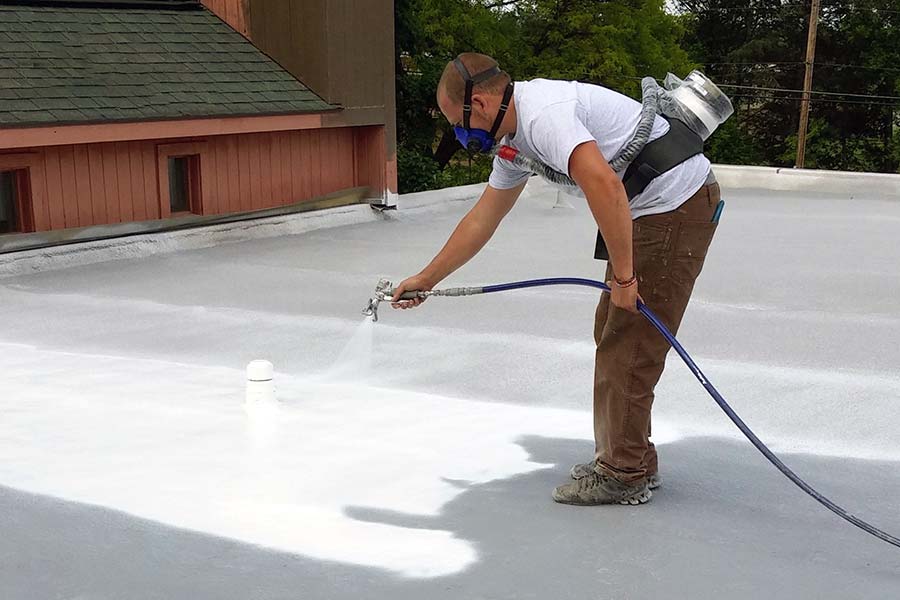Inside Coober Pedy, the Australian mining town where residents live, shop, and worship underground
Mark Kolbe/Getty Images
In the middle of the Australian Outback, there’s a town where chimneys rise from the sand and big red signs warn people of “unmarked holes.”
Welcome to Coober Pedy, the town that lives underground.
What began in 1916 as perhaps the largest opal mining operation in the world has since expanded into a subterranean community that is safely out of reach from the region’s 120-degree summers.
Entire bedrooms, bookstores, churches, and bars are installed in the carved underground walls of Coober Pedy — and after 100 years of living in these “dugouts,” the folks who call it home have no plans of stopping.
Here’s a look inside the underground mining town of Coober Pedy.
Coober Pedy is located in South Australia, over 1,000 miles from Canberra, the country’s capital city.
Google Maps
The town is referred to as the “opal capital of the world.” Coober Pedy is an Aboriginal word that roughly translates to “white man in a hole.”
The town’s summer months can reach 120 degrees Fahrenheit.
Shutterstock
Even in the shade, it’s common to feel temperatures of 100-plus. Much to the dismay of locals and visitors, there’s little rainfall to provide relief from the harsh sun.
Due to the dry climate, water can be scarce sometimes.
Mark Kolbe/Getty Images
According to ABC News, Coober Pedy sources its water from the Great Artesian Basin located about 15 miles away from the town.
While Aboriginal people have long inhabited the region, miners first moved to the town in 1916.
Ian Waldie/Getty Images
After World War I, soldiers returned home and began mining the terrain for opal — a precious gem.
Coober Pedy was once covered by an ocean, which helped create the town’s opal mines.
Dmitry Chulov/Shutterstock
When the water receded, the minerals from the ocean’s seabed filled cracks in the earth and created colorful opals in the terrain.
As opal mining settled into a steady — but less booming — business, Coober Pedy residents began turning discarded opal mines into permanent dugouts.
Mark Kolbe/Getty Images
Many turned the mines into makeshift homes to escape the oppressive heat.
With the homes’ cave-like exteriors, the process of going underground may seem like a venture into the unknown.
Mark Kolbe/Getty Images
The town has an eerie, other-worldly feel to it, despite being home to around 2,500 residents.
But some 80{7fdb079a49a3139eb70ba6db044f3bbe0279c46efbc8518eda811287ddf25be9} of the local population have made homes inside the sandstone.
Mark Kolbe/Getty Images
They’ll likely spend most of their lives there, escaping the harsh Australian sun and making their home beneath the Australian Outback.
Once visitors are down there, it’s actually pretty homey.
Mark Kolbe/Getty Images
Rooms like this, the bedroom of Faye Nayler, a woman who picked and shoveled her own home in 1960, are the norm.
Faye Nayler and two friends managed to build a bar, a swimming pool in the living room, and a full eat-in kitchen.
Mark Kolbe/Getty Images
The underground homes have all the amenities of traditional ones — internet access, electricity, and water.
Today, it’s billed as a tourist attraction called Faye’s Underground Home.
Mark Kolbe/Getty Images
The only difference between “normal” homes and those in Coober Pedy is that these homes have no access to sunlight.
It’s still inhabited by the caretakers of the home, who give guided tours on a daily basis.
Mark Kolbe/Getty Images
Visitors must pay an entrance fee to tour Faye’s Underground Home, but it’s considered one of the must-see spots in Coober Pedy.
Guests can also attend a church service.
Mark Kolbe/Getty Images
The church is located 55 feet below the Earth’s surface.
Inhabitants can also buy a good book at the town’s bookstore to pass the time.
Remi DU/Flickr
Underground Books was converted from a 1930s-era mining shaft into a small bookstore filled with Coober Pedy history books and more.
Tourists looking for the authentic Coober Pedy experience can check out the Desert Cave Hotel.
STR New/Reuters
The town of Coober Pedy is only accessible by a small airstrip, by coach tour or private car, and via the Ghan railway line running between Darwin and Adelaide.
The hotel features a bar, pool room, restaurant, and gift shop.
Mark Kolbe/Getty Images
A room in the cozy inn that runs for around $150 a night.
People do need to come up for food, however.
Travel Outback Australia
Both of the town’s supermarkets are located on the same street aboveground.
There are also a number of tourist shops in the town.
fritz16/Shutterstock
The Opal Bug is an opal shop in Coober Pedy that sells everything from the gems to jewelry and watches. However, many visitors also like to visit the shop to see the famous opal-colored Volkswagen Beetle.
Other souvenir shops cater to both locals and tourists.
Mark Kolbe/Getty Images
This store’s outdoor sign advertises that it sells everything from DVDs and video games to fossils and opals.
Holes in the ground from the old mine shafts are found throughout the town.
Fat Jackey/Shutterstock
Inhabitants and visitors need to watch their step — especially at night.
The town makes sure people know the dangers of the deep mine shafts.
Mark Kolbe/Getty Images
Signs just like this one are scattered all over the town.
Mining equipment and abandoned vehicles can also be found scattered around Coober Pedy.
SusaImages/Shutterstock
Australia produces roughly 95{7fdb079a49a3139eb70ba6db044f3bbe0279c46efbc8518eda811287ddf25be9} of the world’s precious opal supply, and mining is still a popular trade in Coober Pedy. However, most mining is fully mechanized today.
Read the original article on Business Insider






